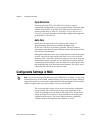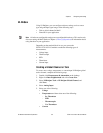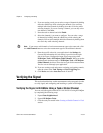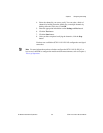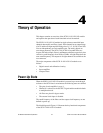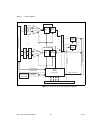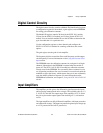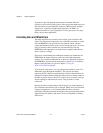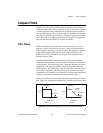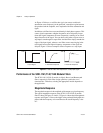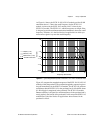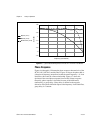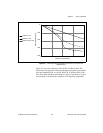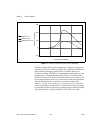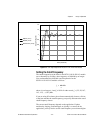Chapter 4 Theory of Operation
SCXI-1141/1142/1143 User Manual 4-4 ni.com
In general, to provide optimum measurement resolution and noise
rejection, you can select as high a gain as will not cause the output to exceed
this limit. However, total harmonic distortion (THD) increases at higher
output levels, especially at higher input frequencies. If THD is of
significant concern in a given application, a lower gain (one or two steps
lower) may be more appropriate.
Correcting Gain and Offset Errors
The input amplifiers have intrinsic errors in their gains and in their DC
offsets. To compensate for the gain errors, calibration constants are stored
in the EEPROM for each gain and for each channel. These constants
contain the adjustment factors used to correct for the gain errors. If you are
using NI software, these constants are read automatically from the
EEPROM and the appropriate correction factor is applied when the raw
data is scaled to a voltage.
Gain errors are determined and calibration constants are loaded into the
EEPROM at the factory. However, gain errors drift with temperature
changes. You can add an additional set or subset of calibration constants to
the EEPROM to optimize performance under a specific set of conditions.
Details of this procedure are given in Chapter 5, Using the
SCXI-1141/1142/1143 Module.
To account for offset errors, you can configure the module to send a 0 V
differential signal through the amplifiers. The signal at the output
represents the DC offset error and should be read and subtracted from all
subsequent readings. Before reading this offset error on a channel, either set
the filter to bypass mode or allow it to settle for several seconds. Average
several readings to minimize noise errors. This procedure is called
calibration.
Because the offset voltage changes with each gain, you should perform a
new calibration each time the gain is changed. Offset errors also drift with
changes in temperature, so you should update the offset correction
periodically. Measurements made during the warm-up period of the module
(approximately 20 minutes) and chassis are most susceptible to drifting
offset errors.




